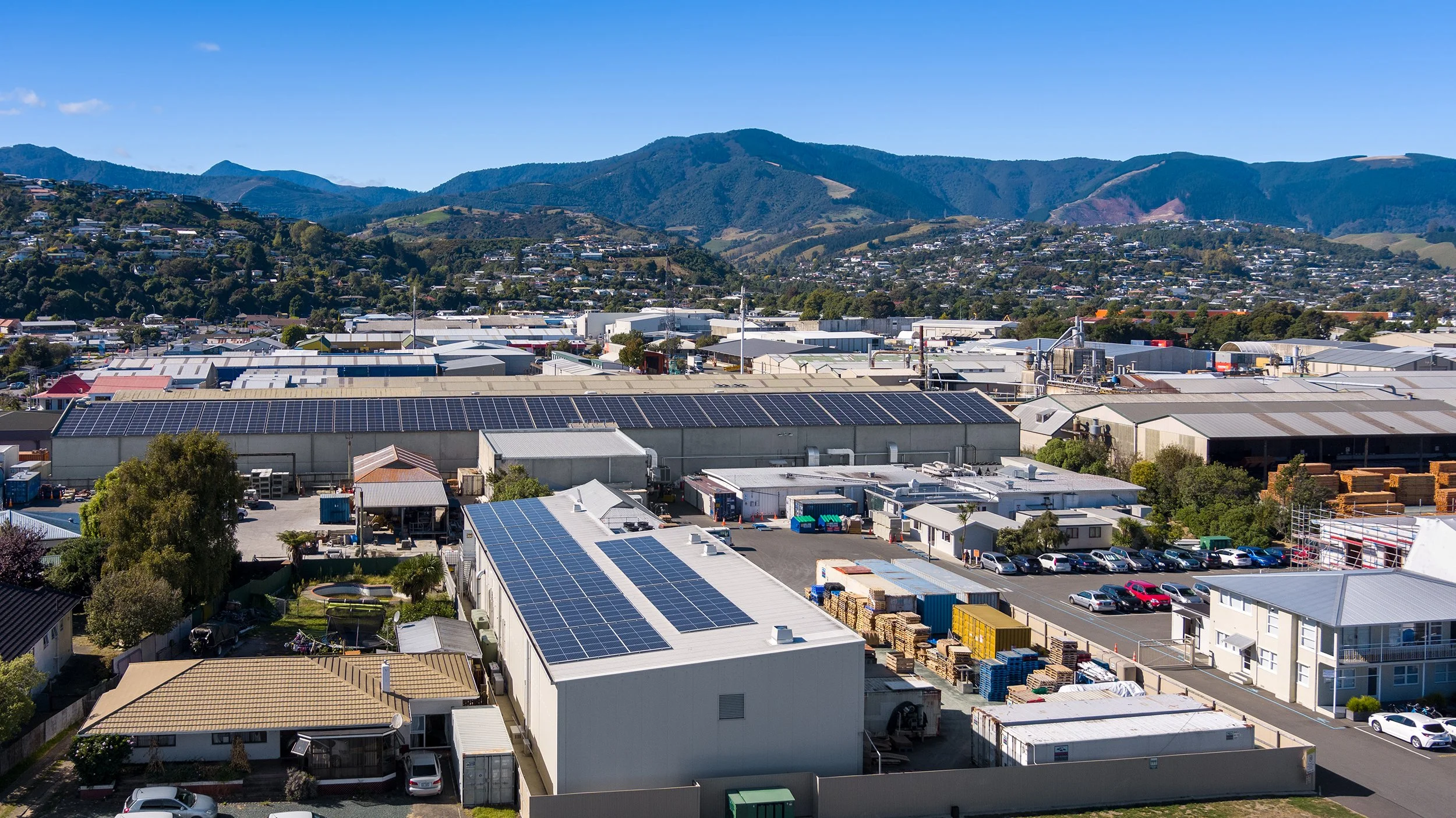
Commercial Solar Power
Cost effective solar electric solutions for commercial, industrial and agricultural businesses.
Installing solar power strengthens your company’s environmental credentials and makes a sound financial investment.
With over 3,000 solar energy system installations completed, when you deal with ESolar, you deal with technical experts, who work closely with you to ensure your solar output meets your business’s energy requirements, and provide the best advice and service. As the price of power continues to rise solar makes more and more financial sense. Our commercial solar offers returns on investment of at least 15% – often more. Solar energy allows you to take control of your power overheads through our top of the line solar systems, installation expertise and all-in-one service.
Commercial solar power with a grid-connected system
Grid Connected Solar, Grid-Tied Solar, and On-Grid Solar all refer to the same type of solar powered electrical system - one that is connected to the national electricity grid.
Most businesses in New Zealand are already connected to the national electricity grid, so most of the systems we install are grid connected. By adding PV (photovoltaic) solar panels to your building, you can generate direct current (DC) energy from the sun. This energy is then converted from DC electricity into AC (alternating current) electricity suitable for direct supply to the loads. If more electricity is required than their solar system generates, the rest of the building’s electricity need is purchased from the grid. Any excess solar energy not required by the loads can be sold to the grid.
Many businesses consume the bulk of their energy throughout the day, which means that they are able to make very good use of the solar energy available.
Some recent grid connected PV solar installations
324kWp Commercial system for Alaron in Nelson
Alaron is a commercial freeze drying operation in Nelson, with very high energy demands. We have installed a 324kWp grid tie solar system over two of their buildings to reduce their energy costs and carbon footprint.
47kWp Commercial system for Nelson Hospice
We installed a 47kWp system on the Nelson Hospice when it was under construction, with the vision of adding more solar to the build over time. Currently, they cover 30% of their annual consumption with the solar system.
55kWp Commercial Hybrid system for Leavesden Vineyards
Leavesden Vineyards were wanting to reduce the carbon footprint and energy costs, but also they wanted to have energy security. We have installed a 55kWp solar system with battery storage, which ensures they can continue their operation in the event of grid failure.
The components of a grid connected solar system
Photovoltaic (PV) Solar panels
Photovoltaic solar panels are usually mounted on your roof and use the sun’s solar radiation to generate DC (Direct Current) electricity.
String inverters
The electricity travels to an inverter, usually located near the switchboard, which converts the DC electricity into 230 volts AC to be used by your loads.
Energy monitoring and display
Web-based monitoring is provided, giving you the ability to monitor and manage your solar energy. This monitoring can also be displayed on a large monitor for your customers to see when they visit your building.
Commercial solar power with a hybrid system
A Hybrid Solar System is very much the same as a Grid Connected Solar system, with the addition of battery storage.
Most commercial buildings in New Zealand are connected to the national electricity grid. By adding PV (photovoltaic) solar panels to your building, you can generate direct current (DC) energy from the sun. This energy is then converted from DC electricity into AC (alternating current) electricity suitable for ordinary use by an inverter.
Buildings with a Hybrid Solar System consume the solar power first, and any excess solar energy is then used to charge the battery bank. Once the battery bank is full, any excess solar energy can be sold to the grid. When there is little or no solar energy available, the building will draw energy from the battery bank. Once depleted, power will be purchased from the national electricity grid as usual. Another feature of some Hybrid Solar systems is the ability to provide energy to essential circuits during a power outage.
Some recent hybrid solar installations
This is an image from Leavesden Farm in Blenheim. We have included 60kWh of battery storage in this solar system, which provides them with grid security.
At the Motueka Library we installed a 102kWp solar system, with 46kWh of battery storage. This image shows the Fronius solar inverters, Selectronic battery inverters and BYD Lithium batteries.
This is a Farm in Tasman where we have installed a 3 phase solar system with a Fronius solar inverter, Selectronic battery inverters and BYD Lithium batteries.
The components of a hybrid solar system
Photovoltaic (PV) solar panels
Photovoltaic solar panels are usually mounted on your roof and use the sun’s solar radiation to generate DC (Direct Current) electricity.
Solar Inverter
The electricity travels to an inverter, usually located near the switchboard, which converts the electricity into 230 volts AC to be used by the loads.
Battery storage
Excess solar energy is charges the battery bank for use when there is limited or no solar energy available. There are many batteries available but we recommend Lithium batteries for commercial applications.
Hybrid Battery Inverter/Charger
A battery inverter controls the energy in and out of the batteries. It is also the brain of the system, which means it will control the flow of energy in and out of the batteries.

Case study one - Nelson Hospice
Nelson Hospice is a palliative care facility. They have a reasonably high constant energy demand, especially throughout the day, which is well suited to solar.
We provided a 47kWp grid-connected solar system consisting of 150 x REC 315watt solar panels and 2 x Fronius Symo 20kW inverters.
This system produces approximately 70MWh of energy annually, resulting in approximately $20,000 of annual savings.
The building has also been pre-wired for additional solar as the energy demand increases.
The installed cost of this system was $90,000.
Case study two - Alaron Nelson
Alaron manufactures supplements and natural health products in capsule, tablet, powder, and liquid formats. They have a substantial energy demand within their facility, with a large portion of the demand being throughout the day.
We provided a 324kWp grid-connected solar system consisting of 810 x REC 400watt solar panels and Fronius Tauro inverters.
This system produces approximetly 460MWh of energy annually, which results in approximately $78,000 of annual energy savings.
The installed cost of this system was $385,000.
Alaron is growing rapidly, with future plans to add additional solar to new buildings as they are constructed.
Case study three - Leavesden Farm
Leavesden Farm is a Blenheim vineyard with a reasonably high energy demand of 77MWh per year. The owner was looking to eliminate as much of his energy usage from the national grid as possible to reduce ongoing energy costs and improve the farm’s carbon footprint. Of equal importance he wanted to have grid security, so that he could continue to operate if there was a grid failure.
We provided a 52.8kWp grid-connected hybrid system consisting of 132 x REC 400watt solar panels and Fronius Symo inverters. We also included Victron battery inverter with Freedom Won Lithium batteries.
The system produces approximately 78MWh of energy annually, which is about $19,500 of annually energy savings.
The installed cost of this system was $180,000, which is much higher than a standard grid-connected system because of the addition of battery storage.
















